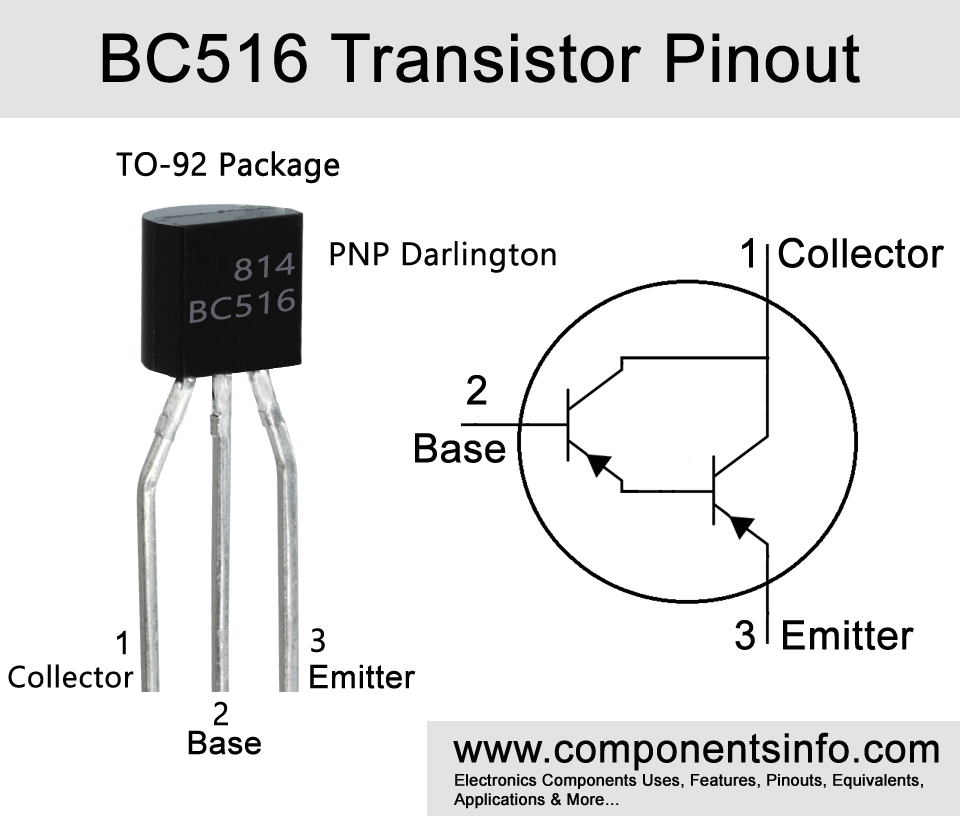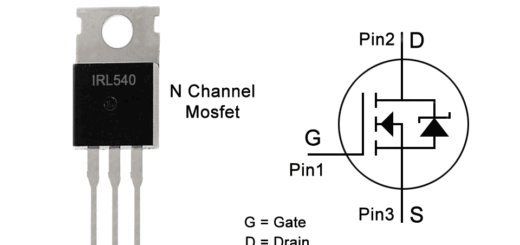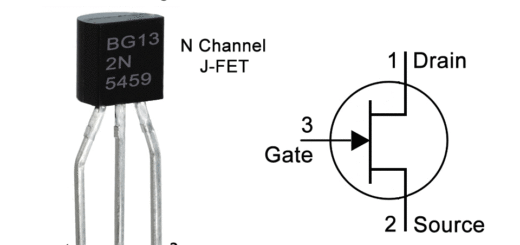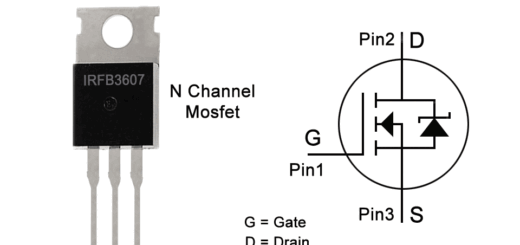BC516 Transistor Pinout, Equivalent, Features, Applications and Other Info
This post explains BC516 transistor pinout, equivalent, features, applications, explanation, where and how to use this transistor and other useful information.
Features / Technical Specifications
- Package Type: TO-92
- Transistor Type: NPN Darlington
- Max Collector Current(IC): -1.2A
- Max Collector-Emitter Voltage (VCE): -30V
- Max Collector-Base Voltage (VCB): -40V
- Max Emitter-Base Voltage (VEBO): -10V
- Max Collector Dissipation (PC): 625 miliWatt
- Max Transition Frequency (fT): 200 MHz
- Minimum & Maximum DC Current Gain (hFE): 30000
- Max Storage & Operating temperature Should Be: -55 to +150 Centigrade
NPN Complementary:
NPN Complementary of BC516 is BC517
Replacement and Equivalent
MPSA14, BC517 (Check pin configuration before replacing)
Nearest possible equivalents are MPSA64, KSP64
BC516 Transistor Explained / Description
BC516 is a PNP darlington transistor manufactured in TO-92 package. It is designed to be used in applications that require very high gain of up to 30,000.
A darlington transistor consists of two transistors inside which are connected in a special way (see the pinout image above to check the internal diagram) which amplifies the gain of the transistor to a great extent.
Understanding the absolute maximum ratings of the transistor, the max collector current of the transistor is -1.2A which means you cannot drive load of more than 1.2A, the max collector to emitter voltage is -30V which means that you cannot drive more than -30V load through this transistor. The max collector-base voltage (VCB) is -40V this voltage is used to control the operation of the transistor. The max emitter-base voltage (VEBO) of the transistor is -10V, the (VEBO) is the max applied voltage between the emitter and base of the transistor, this voltage shows the maximum limit of the emitter-base junction for reverse voltage and more than -10V can break down the transistor. The max collector dissipation (PC) of the transistor is 625mW, the max (PC) shows the maximum heat this transistor can handle without damage.
Where & How to Use
BC516 transistor can be used in any circuit that requires converting a low-gain signal to a high-gain or driving a load from a low-level signal. Such as switching circuits in which we want to drive high current load with low-level signal. Signal amplification circuits where we want to increase the signal to a good level. To amplify the output of sensors so we can enhance and increase the sensitivity of the sensors.
Although the internal circuitry of the transistor is different from other normal BJT transistors but the using procedure of this transistor is same as we use any BJT transistor in which we connect base of the transistor to the input signal through a suitable current limiting resistor, emitter terminal to the negative supply and collector with the positive supply through the load.
Applications
Audio Preamplifiers
Sensor Circuits
Voltage Regulators
Audio Amplifiers
Motor Driver
Control Systems
Battery Chargers
Safe Operating Guidelines
To safely operate the transistor one of the most important thing is to not use this transistor to its absolute maximum ratings and as we suggest stay 20% below these ratings. Therefore the max collector to emitter voltage is -30V so do not drive load of more than 24V, the max collector current is 1.2A therefore do not drive load of more than 0.96A. The emitter-base voltage must be under -10V and always store or operating it at temperatures above -55 and below +150V.
Datasheet
To Download the datasheet just copy and paste the below link in your browser.
https://z3d9b7u8.stackpathcdn.com/pdf-down/B/C/5/BC516_FairchildSemiconductor.pdf



